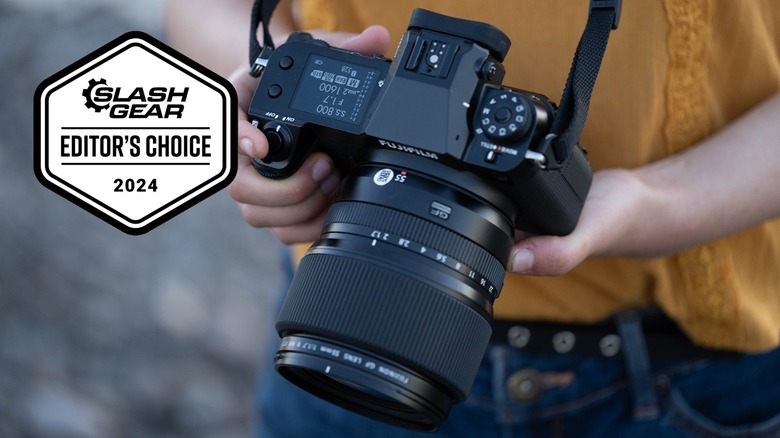
Andy Zahn/SlashGear
By Andy Zahn/
EDITORS’ RATING : 9 / 10
- Incredibly detailed 102MP images
- Subject detection and eye-AF rival Nikon’s
- Robust weather sealing and rugged design
- Extremely impressive IBIS system
- Excellent low light performance
- Relatively affordable for a medium format camera
- Ergonomic and comfortable to use
- No CFExpress Type-B card slot
- Mini-HDMI port
- Focus and continuous shooting still lag slightly behind full frame Lacks high framerate video capability
Medium format photography has remained niche and expensive for decades, but that might be changing with the Fujifilm GFX 100S ii. Medium format describes a camera which uses film or a digital sensor which is larger than the standard 35mm (full frame), but smaller than large format cameras such as the gigantic view cameras employed by such famous photographers as Ansel Adams. Using a digital medium format camera, you can capture richer, more detailed images than with a camera with a smaller sensor.
Even just a few years ago, getting into digital medium format was pricey, and you had to accept some serious compromises in terms of features and capabilities. For most people, the tradeoffs simply weren’t worth it. However, with last year’s GFX 100 ii, Fujifilm created a medium format camera which was far more on-par with modern full frame cameras when it came to things like video capture and autofocus. Now with the GFX 100S ii, many of those features have trickled down into a much more affordable body. On paper, this camera may well entice you to make the move to medium format, but does it live up to its potential when put to the test in the real world?
Fujifilm provided a sample of the Fujifilm GFX 100S ii, as well as the Fujifilm Fujinon GF 55mm f/1.7 R WR and the Fujinon GF 500mm f/5.6 R LM OIS WR Lenses for this review.
Enormous sensor delivers jaw-dropping detail
102 megapixels is a lot of pixels, and as someone more used to shooting with 46 megapixels I was initially skeptical as to whether this would represent a significant advantage to me. However, I quickly discovered that having more than twice as many pixels granted me an enormous amount of flexibility when editing my photos. Being able to crop way into your image while maintaining sharpness opens up a wealth of possibilities. You don’t need to worry if your subject is a little distant or poorly framed when you snap the shutter because you can easily zoom in and re-compose after the fact.
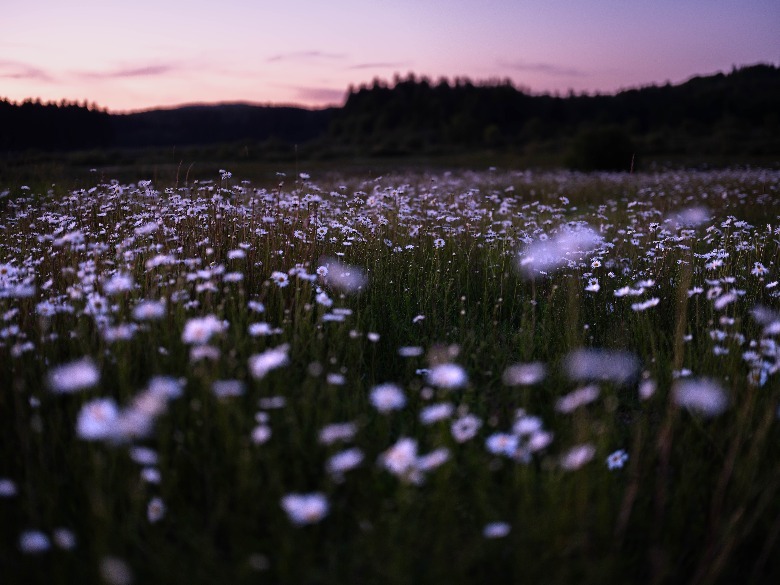
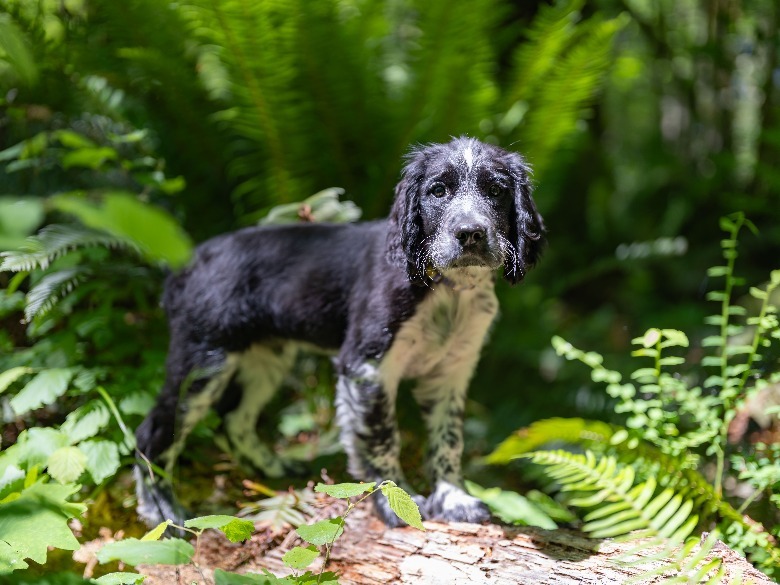
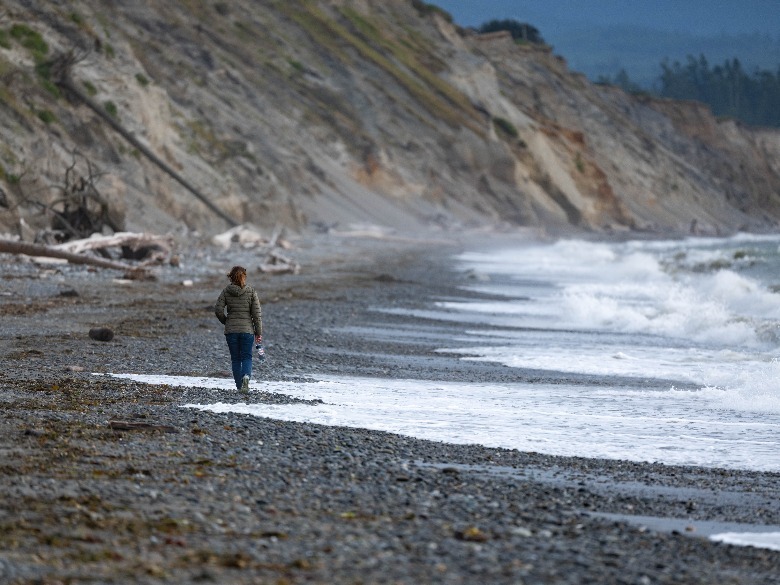
With the super-telephoto Fujinon GF 500mm f/5.6 R LM OIS WR, I was able to capture sharp shots of birds and other animals, then easily crop in by 2x and still have a crisp high resolution photo. Similarly, when shooting with the Fujinon GF 55mm f/1.7 R WR, I was able to crop the top and bottom of my images to create a panoramic aspect ratio and retain enough vertical resolution that the final image could be printed as large as possible without loss of detail.
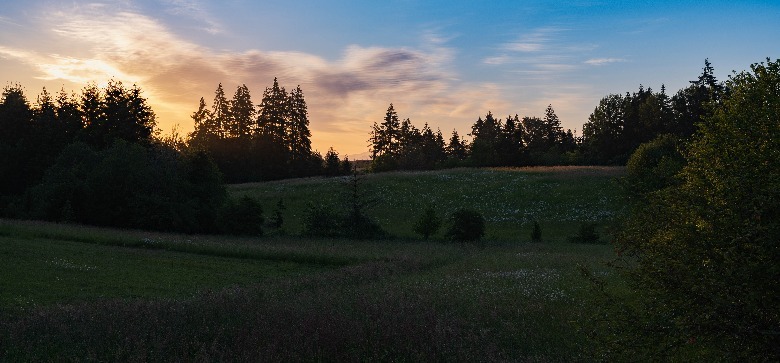
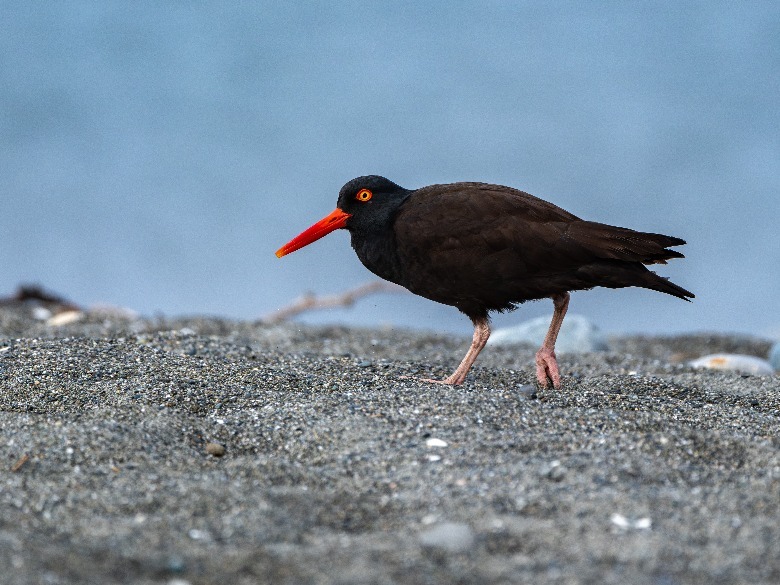
Color science and dynamic range are also strengths of the GFX 100S ii. I love the way the camera renders images, and as with the Fujifilm X100VI, the GFX 100S ii includes Fujfilm’s film simulation modes so you have plenty of options to customize how the camera renders your images.
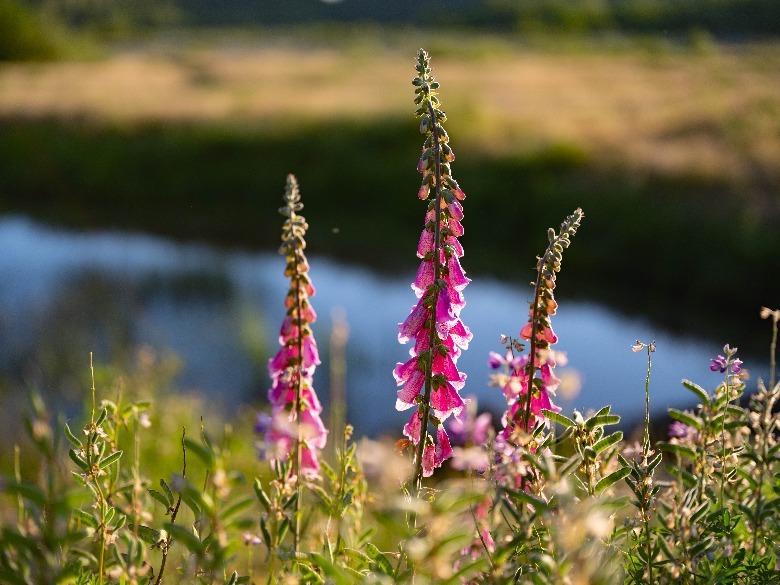
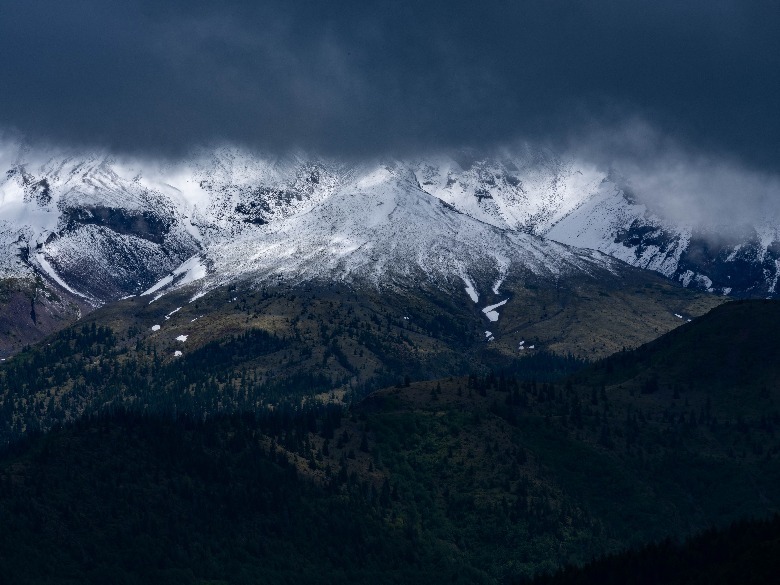
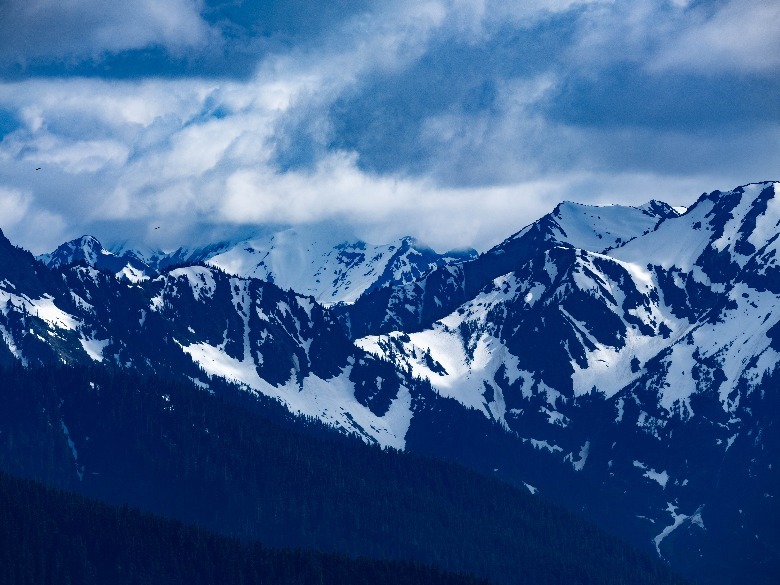
With regards to dynamic range, I was thoroughly impressed by how much detail I could pull out of crushed shadows and blown-out highlights. This is also one of the best sensors I’ve used when it comes to keeping noise at an acceptable minimum, and low light conditions were never an issue in my experience.
Remarkable autofocus for a medium format camera
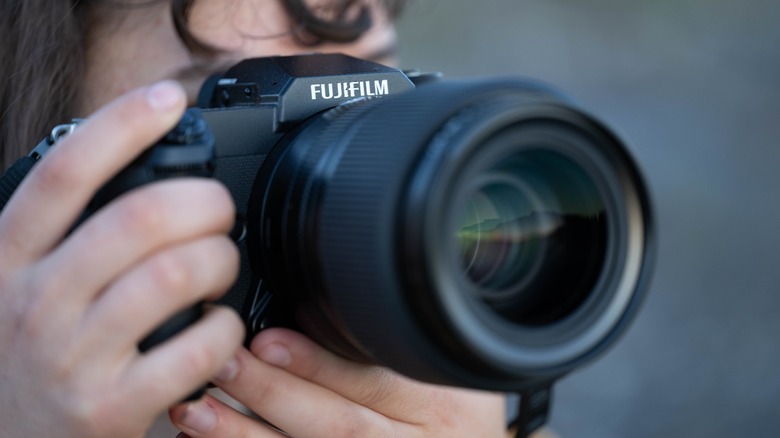
Andy Zahn/SlashGear
I didn’t expect a medium format camera to be capable of keeping up with quick moving wildlife. The little birds which are my favorite subjects rarely hold still for long, and spend most of their time in crowded, dim environments, which push the limits of any camera system’s autofocus and low light shooting capabilities. However, I was pleasantly surprised to find that while the GFX 100S ii doesn’t quite measure up to the autofocus of my Nikon Z8, it does come extremely close to doing so. In general, autofocus performance is fast and reliable, and the various intelligent subject detection modes do the trick for nabbing sharp focus on a variety of pre-selected subjects.

The intelligent autofocus system in the GFX 100S ii does have a few key flaws to be aware of. Each type of subject must be individually selected, so for example if you want to photograph a cat, but you’re in bird mode, you’ve got to swap to animal mode. On my Nikon Z8 and Z9 cameras you also have the ability to select specific subjects, but if you like you can instead simply tell the camera to look for a variety of subjects simultaneously, which is my default setting on those cameras. Fujifilm’s system works well, but on a number of occasions I missed shots while I switched from one type of subject to another. The GFX 100S ii also had trouble getting sharp focus on animal eyes in some of my shots. Also, burst mode tops at at 7 fps, which is fast for medium format, but many full frame cameras offer much faster continuous shooting.
With that said, with the exception of Nikon’s high end cameras, the GFX 100S ii has one of the best autofocus systems I’ve used.
Smoothing out the shakes
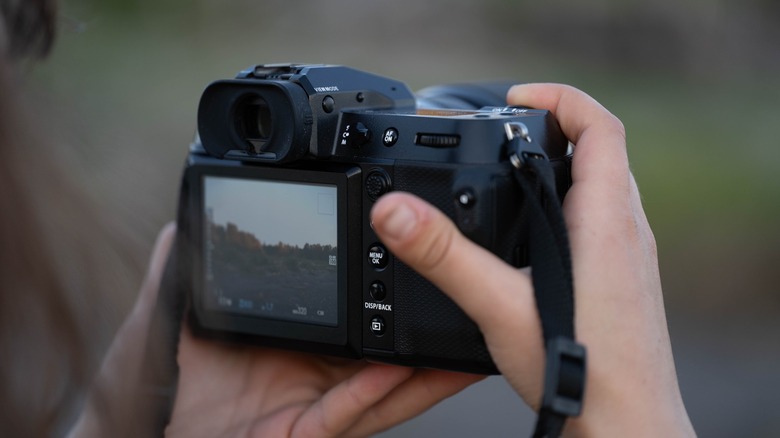
Andy Zahn/SlashGear
One might well assume that a medium format sensor would be tricky to stabilize with in-body image stabilization (IBIS), but in fact the GFX 100S ii rivals the impressive capabilities of the OM Systems OM-1 Mark II which I reviewed earlier this year. For stills, I was comfortable shooting hand-held as low as 1/40th of a second with the Fujinon GF 500mm f/5.6, and even saw acceptable results as low as 1/15.

That’s in part due to the IBIS and in-lens stabilization working together, but I saw similarly impressive results with the Fujinon GF 55mm f/1.7 lens which lacks an in-lens stabilization system, so only the IBIS was left to do all the work on its own. I found that my shutter speed was limited more by the movement of my subjects than by the capacity of the IBIS to iron-out camera shake.
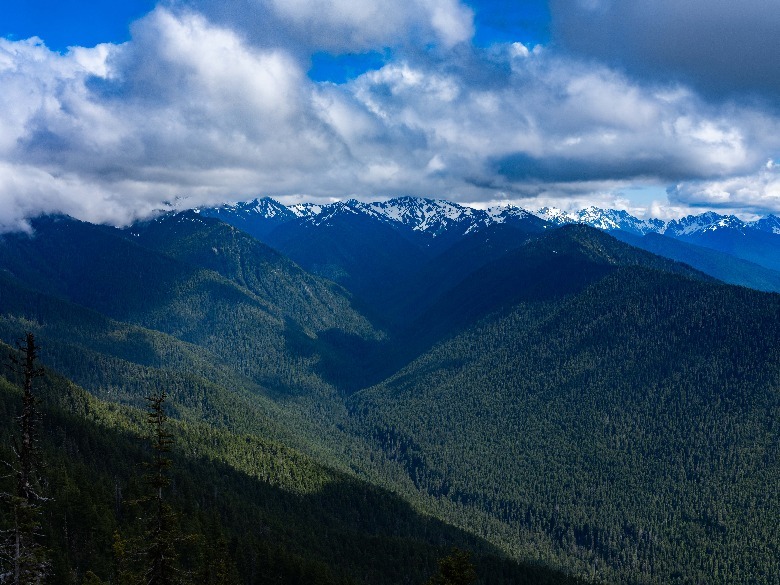
Stabilization is a similarly high point for video, and while camera shake is still present in handheld footage, it’s somehow smoother and more attractive than other systems I’ve used. Overall, when combined with the excellent autofocus performance, the GFX 100S ii is a stunningly capable «run-and-gun» camera, considering that it has a medium format sensor inside of it.
A glutton for batteries and memory cards
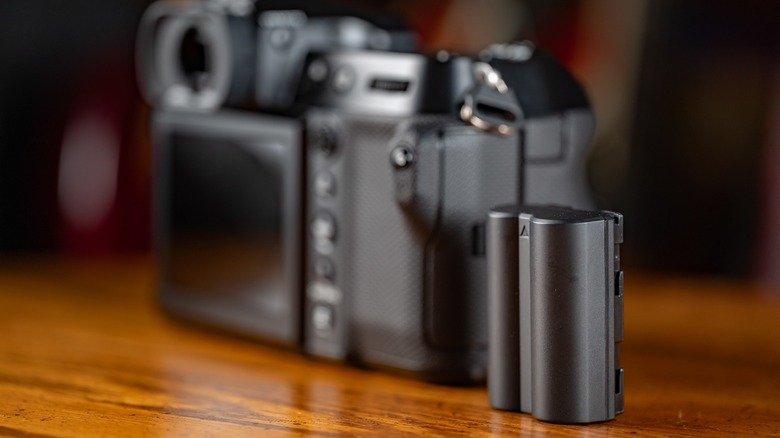
Andy Zahn/SlashGear
The laws of physics are something of a wet blanket when it comes to shooting with a medium format camera, particularly one so capable as the GFX 100S ii. This is nowhere more apparent than when it comes to battery life and how much space it’ll hog on your hard drive. If you’re shooting mixed media like I do, swapping back and forth between shooting photos and recording video, you’re going to burn through that battery rather quickly. Several hours in a wildlife refuge was enough to exhaust the camera’s energy reserves, and I’d highly recommend packing a couple extra batteries for a long day’s outing.
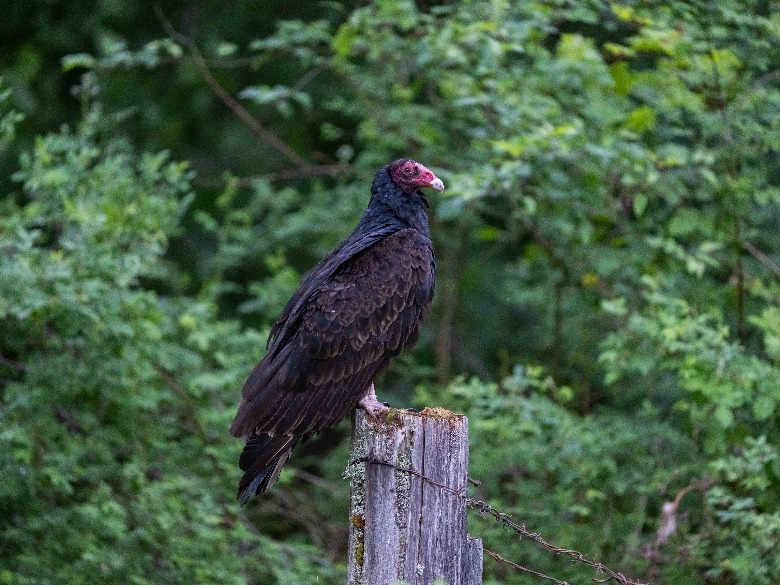
If you’re going to be shooting RAW photos with the GFX 100S ii (which I always do), be prepared for 200MB or larger files. That fills up even a large SD card fast, so you’d be wise to keep several spares in your camera case. This brings us to perhaps the most significant issue I experienced with the GFX 100S ii, which is that the camera is only compatible with SD cards. The lack of a CFExpress Type-B slot is rather glaring, and I made the mistake at first of shooting with a 100Mbps SD card. This resulted in lengthy loading times after shooting photos, but once I realized the problem and switched to a 200Mbps SD card I only rarely thereafter experienced pauses while the camera stored the massive files it captured to the storage media. This would not have been a problem with CFE cards, and I recommend that you use no card slower than 200Mbps.
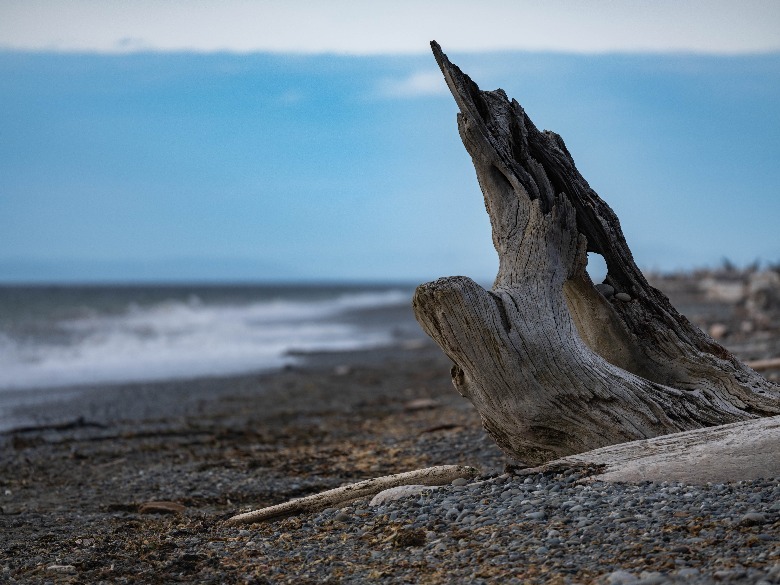
Port selection on the GFX 100S ii is otherwise largely as you’d expect, except for the mini-HDMI port which is not great to say the least. Fujifilm should have included full size HDMI.
Ergonomic and rugged
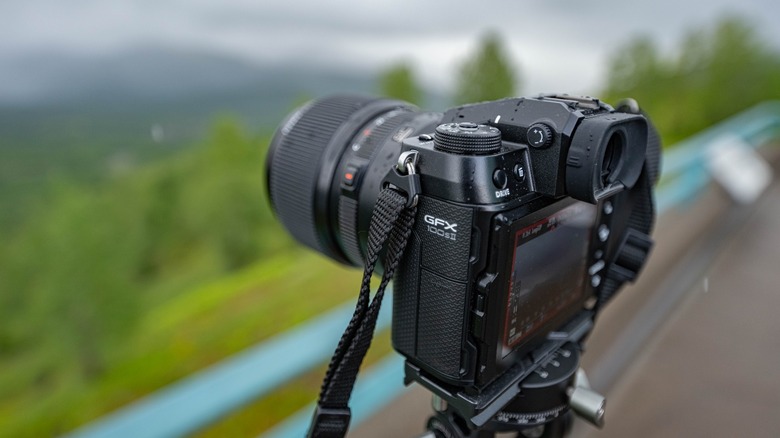
Andy Zahn/SlashGear
As someone with abnormally large hands, I very much appreciate a large camera with a good sized grip. While some may find the GFX 100S ii overly large and heavy compared to other more petite mirrorless cameras, I discovered it to be particularly ergonomic and a pleasure to use. The large protruding bump on the back of the camera gives you a substantial, extra-secure hold for your thumb, and the texture of the grip feels really nice in the hand.
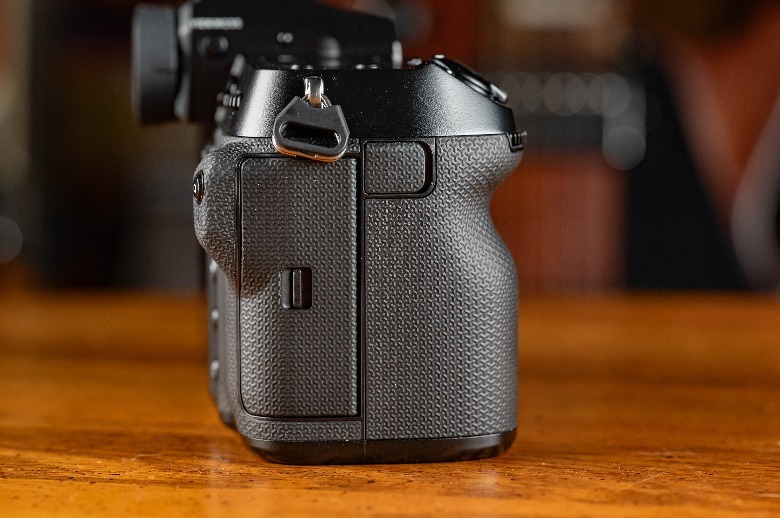
Overall, I was very impressed with the materials used in the construction of this camera. The grip material and port covers, in particular, inspire confidence compared to the materials available on competitors products. Where often these elements are prone to warping, on the GFX 100S ii I’m optimistic that they will stand the test of time and daily use. In fact I’d go so far as to say that the grip and port covers are the best I’ve encountered on any camera from a durability perspective.
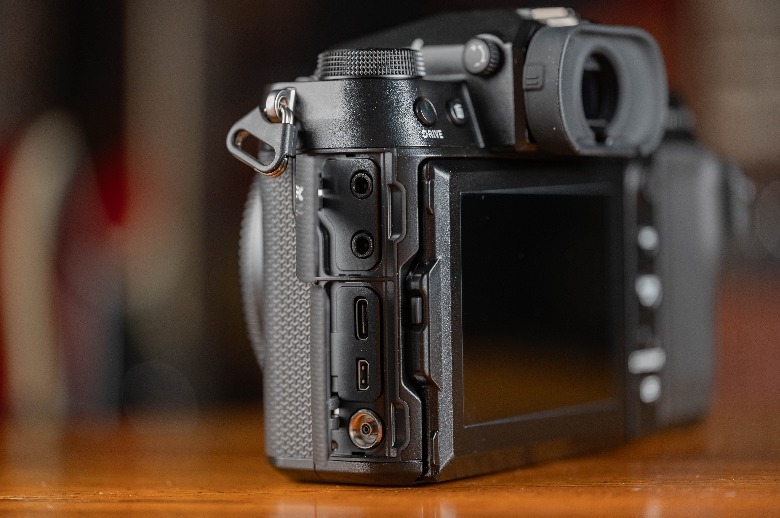
The camera is also weather sealed, and while using alongside weather resistant lenses, I had no qualms having the camera out in light rain or on the beach. For my use, such rugged and resilient design is absolutely essential.
Smart control layout and great displays
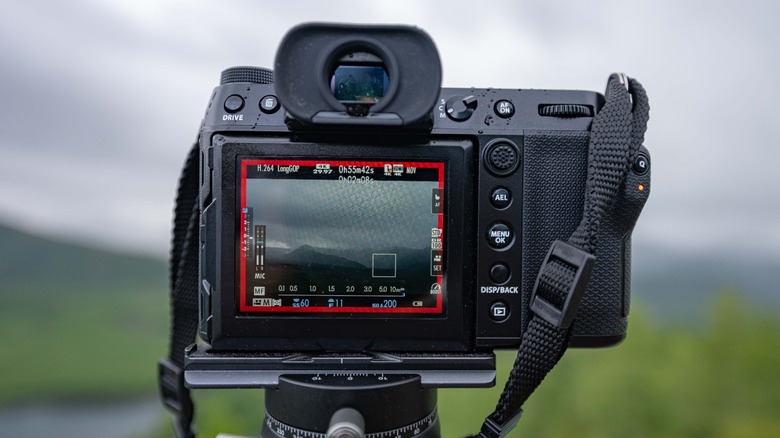
Andy Zahn/SlashGear
While the control scheme of the GFX 100S ii took some getting used to, given my lack of familiarity with GFX cameras, it was nonetheless a short and gentle learning curve for someone who daily-drives Nikon’s Z system. Buttons and dials are well laid-out, and after a few days I was able to confidently navigate the camera and began building muscle-memory. By the end of my three weeks of testing it, I was swapping between it and my Nikon without any difficulty.
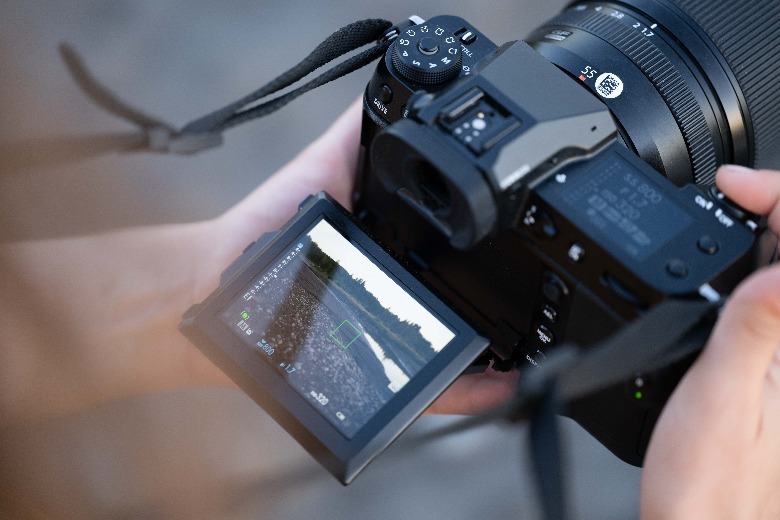
The large touchscreen, viewfinder, and top display panel are all very high quality. Navigating menus and selecting focus points on the main screen is fluid and the screen is bright and accurate. The electronic viewfinder is similarly great to use, and the top-mounted display can be customized to show various different useful information.
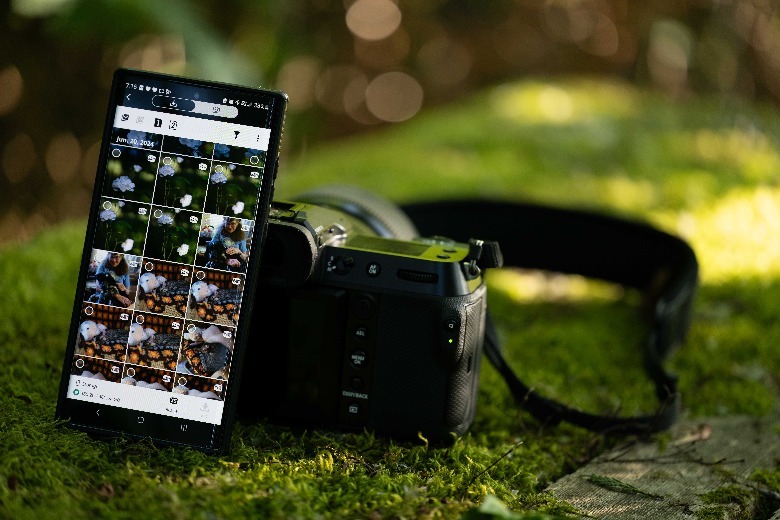
I particularly appreciated the articulation of the main display, which allows for it not only to be tilted up and down, but to the side as well for vertical low or high angle shots. The Fujifilm companion app is competently designed and reasonably easy to connect to the camera, and the onboard camera menus were also decent and easy to navigate once I acclimatized to them.
Video capabilities are just OK
The Fujifilm GFX 100S ii is very clearly a stills-first camera, but it also delivers reasonable video recording capabilities, though it’s quite basic and limited in this regard. It can only record up to 4K 30fps footage, and the closest thing to slow motion is 1080p 60fps. The footage looks beautiful, so if you don’t need higher resolutions and shutter speeds this may still work for you, and in the context of the camera being primarily intended for stills photos, it’s certainly acceptable if you only occasionally need to film some video.
For hybrid shooters who make use of video and stills features in equal measures, it may well be worth it to spend the extra cash on the Fujifilm GFX 100 ii (non-S), which features 8K 30fps and 4K 60fps capability, alongside ProRes recording. Still, compared to medium format cameras of the not-so-distant past, the GFX 100S ii performs fairly well when it comes to video, and you do get the advantage of the «medium format look».
Relatively affordable price makes medium format photography more accessible
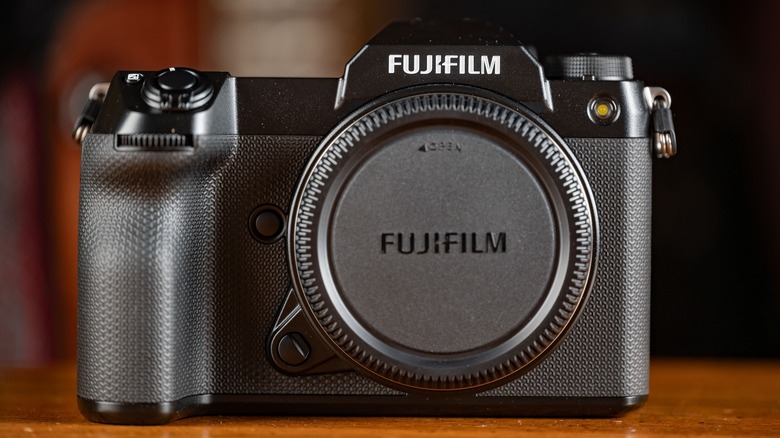
Andy Zahn/SlashGear
Calling $4,999 «affordable» is certainly worth a raised eyebrow or two, but in context the GFX 100S ii might even be considered a bargain by some comparisons. Other medium format cameras, such as the Hasselblad X2D 100C, will set you back over $8,000, and the higher-end version of Fujifilm GFX 100S ii (the 100 ii) is half-again as expensive as the 100S ii. Given how well the GFX 100S ii compares to more expensive medium format cameras, its price becomes rather attractive.
Even compared to high end full frame cameras, the GFX 100S ii is competitively priced. While you can get a Nikon Z9 for less than $5,000, at launch that camera was significantly more, and it’s within the range of flagship devices from Sony and Canon as well. Given this company, opting for the GFX 100S ii is a very valid choice, given that no full frame camera can equal the GFX 100S ii for sheer resolution and image quality, and it doesn’t fall too far behind in other aspects.
Regarding lenses and the cost they add to the GFX 100S ii, the Fujinon GF 55mm f/1.7 I tested alongside the camera is $2,299, while the Fujinon GF 500mm f/5.6 is $3,599. That’s steep to be sure, but it’s also honestly not far beyond full frame equivalents such as the Nikkor Z 50mm f1.2 S and the Nikkor Z 500mm f/4.5 VR S (the crop factor of GFX cameras make these two lenses fairly similar to the aforementioned Fujifilm lenses I tested). While Fujifilm’s medium format glass is a bit pricey, they’re also a reasonable value, and there are good native third party alternatives, plus the ability to adapt lenses from other systems, including very affordable vintage glass.
Conclusion
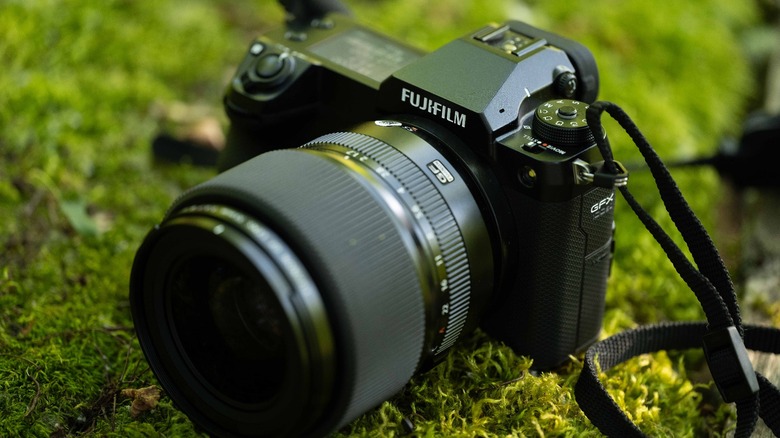
Andy Zahn/SlashGear
The Fujifilm GFX 100S ii is the first camera to genuinely tempt me to switch to a new camera system from Nikon Mirrorless. In fact, I frequently found myself reaching for the GFX 100S ii over my Nikon Z8 not just because I was testing the 100S ii for this review, but rather because it was better suited to certain scenarios where I wanted particularly great bokeh, subject isolation, or to shoot a landscape and crop to create a panoramic composition. I also just truly enjoyed the experience of taking photos with this camera.

Medium format cameras have never possessed as much potential mainstream appeal as the Fujifilm GFX 100S ii. Between its stunning 102MP medium format sensor, competent modern autofocus, impressive image stabilization, excellent ergonomics, and durable design, it’s an easy camera to love and an even easier one to recommend. There’s certainly a lengthy list of caveats to consider, but unless they represent a dealbreaker to you, all are overshadowed by the overall excellence of the GFX 100S ii.
The Fujifilm GFX 100S ii is available now through retailers like B&H Photo for $4,999